Chilling Historical Discoveries Explained
By | November 22, 2022
Antoine Fraveau was wearing this breastplate when he was struck and killed by a cannonball at the Battle of Waterloo in 1815
Forget what you learned in the history books. More often than not they only tell one side of a story filled with nuance. The rare discoveries that have been collected here show a side of history that we rarely get to see. They peel back the layers of stories that we think we know to expose little known facts that make history all the more fascinating. If you are ready to see a different side to history than you already know, then click ahead...the truth awaits!
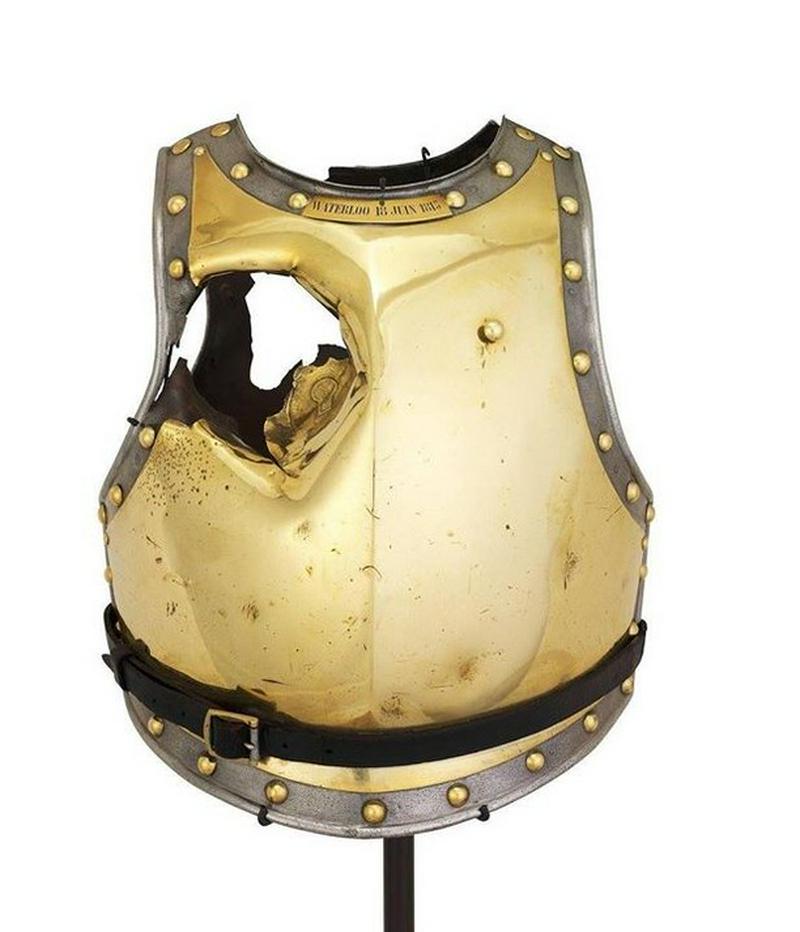
Serving Napoleon during one of the skirmishes at Waterloo, Antoine Fraveau was just a young man when he took to the field in this glistening golden breastplate. Pieces of armor like this were vastly important to soldiers in the 19th century as they protected against blows from blunt instruments and in some cases they could protect against sword swipes. The one thing they definitely couldn’t protect against was a cannonball. While fighting in 1815 he was blasted by cannon fire. Supposedly he was preparing to get married shortly before his death. This breastplate shows the true violence of the Napoleonic Wars.
Undine Rising from the Waters by American sculptor, Chauncey Bradley Ives.
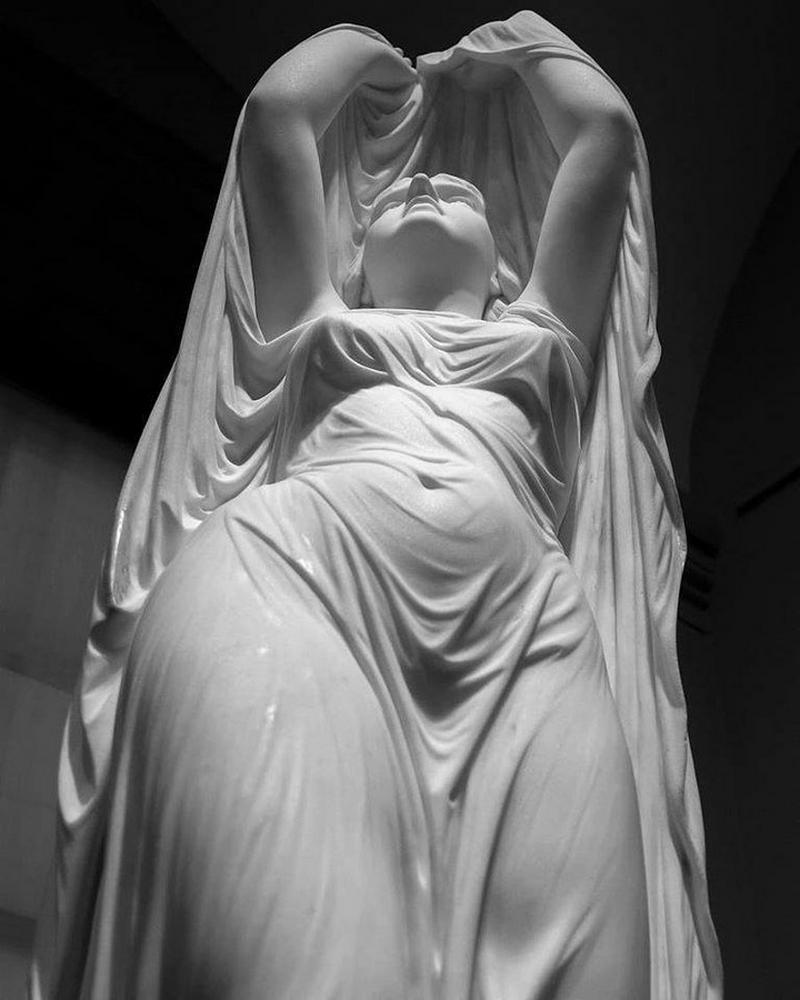
This dreamy statue featuring gossamer thin carving that’s maintained the color of milk was created by 19th century artist Chauncey Bradley Ive is a representation of the mythological Mediterranean sea spirits who took to the Earth as soulless mortals. Stories of Undines became popular following the release of the novel Undine by Baron Heinrich Karl de la Motte Fouqué.
In the story a water sprite takes on human form and gains a soul after marrying a human knight. However, after he cheats on her she’s forced to kill him. This statue shows the moment that Undine peels out of the water to do away with her husband.
A CT scan of a 1,000 year old Buddha statue reveals the remains of a mummified monk
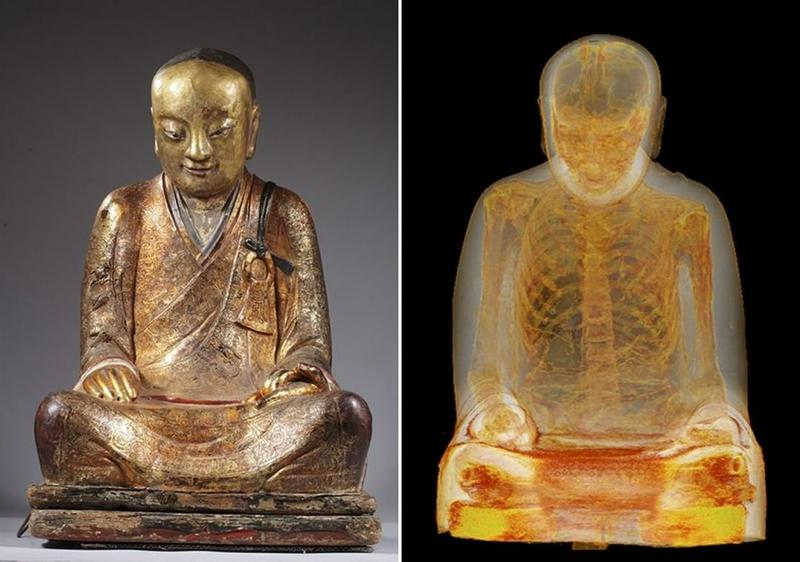
In 2015, researchers in the Netherlands performing a CT scan on a statue of a sitting Buddha found the last thing they were expecting once they got a look inside. The statue contained a monk that had been mummified for 1,000 years. Rather than simply placing the monk inside the statue, researchers discovered that the monk was filled with scraps of paper covered in Chinese characters. In order to mummify oneself a monk would take on a special diet of poisonous tea in order to ensure that the body would be too toxic to be consumed by maggots. It’s rare that a monk could accomplish such a feat, but the few who pulled it off were revered within the community.
This 2,000 year-old green serpentine stone mask found at the base of the Pyramid of the Sun in Teotihuacán, Mexico

This mysterious green mask was discovered at the base of a pyramid in Mexico in 2011, but it wasn’t the only artifact that the archaeologists found. The bounty was discovered at the Teotihuacan Pyramid of the Sun and it’s believed that it was placed in the ground as an offering to the gods 2,000 years ago. Along with the mask archaeologists found pieces of obsidian and pottery directly next to human figurines made from similar pieces of green stone. Archaeologists know that the mask was placed as a part of a dedication ceremony because it was next to a different offering.
An Ottoman supply train still lays where it was ambushed by Lawrence of Arabia on the Hejaz railway during World War I

There were many feats of bravery carried out during World War I, but one of the most inspiring feats of the era was carried out by T.E. Lawrence, otherwise known as Lawrence of Arabia. In 1917 Lawrence was serving in the Middle East when he and a troupe of Arab followers began toppling trains that served the Ottoman supply chain. By the end of the war Lawrence and his troops had destroyed so many trains and railroad that it was impossible to use. Rather than move the vacated trains from their lines the Turkish people simply left them in the desert.
A giant spider crab from Japan, 1904

These giant spider crabs may look like something from a 1050s B-Movie, but they’re very real. These crustaceans live in the ocean around Japan, and they have the longest leg span of any arthropod. Considered a delicacy, the legs of a Japanese spider crab can reach up to 18 feet in length and the crab itself can weigh up to 42 lbs. The reason you don’t see these crabs all the time is because they live in holes within the deeper parts of the ocean, although they can still be caught when the head out to look for food, however the population has decreased due to overfishing.
The first sunglasses date back to the prehistoric Inuits

People have considered the sun to be the enemy of vision for generations, and the first people to use them were the Inuits who had to trudge through the snow more than 4,000 years ago. These early snow goggles kept ultraviolet light out of the eyes of Inuits to keep them from going snow blind. The Inuit people invented hand carved snow goggles provided enough vision through the tiny slits that were carved in them, something that modern researchers are impressed by - specifically because they don’t fog over in polar conditions. The one draw back is that they do considerably limit the vision of the viewer.
Bernhardt Otto Holtermann posed with a 630 pound gold nugget in Hill End, New South Wales in 1845

Born in 1838, Bernhardt Otto Holtermann was a prospector who owned part of an Australian claim where rich veins of gold were discovered after years of dry digging. Born in Germany, Holtermann set sail for Sydney, Australia in order to avoid military service. Most of his years of digging were unsuccessful and one year he even blew himself up with a premature explosion of blasting powder. This famous photo of Holtermann next to a giant “nugget” was taken by an unknown photographer before he was elected as a member for St Leonards parliament in 1882. He passed away at the age of 47.
A one-of-a-kind watch that was created for Marie Antoinette the Queen of France as a gift from a male suitor

A pocket watch fit for a Queen, this extremely ornate watch was commissioned for Marie Antoinette by a mystery suitor in 1783 and no expense was spared. Gold was used in lieu of lesser metals which led the time piece to costing more than $30 million. This one of a kind watch has a full calendar, and jumping hour hand, 23 complications and 823 parts. With all of its bits this is considered to be the fifth most complicated watch ever built. Unfortunately Antoinette never received the watch, it was completed in 1827 – 34 years after she was sent to the guillotine.
World War II breakfast rations contained cigarettes and gum

Everyone loves to take a break for lunch, but food consumption during World War II was not something that soldiers looked forward to. Often soldiers had to pop open a K-ration for a meal, and while provided some of the comforts of home it didn’t totally do the job. That being said there are some interesting items inside. Usually the crackers provided were combined with whichever tinned meat was included in order to make a kind of open faced sandwich that was eaten before enjoying the singular piece of chocolate that was included. These rations had somewhere between 2,500 and 3,000 calories, and while that was considered to be a bit caloric for intense efforts they didn’t change throughout the war.
King Tutankhamun's sandals, royal and fashionable
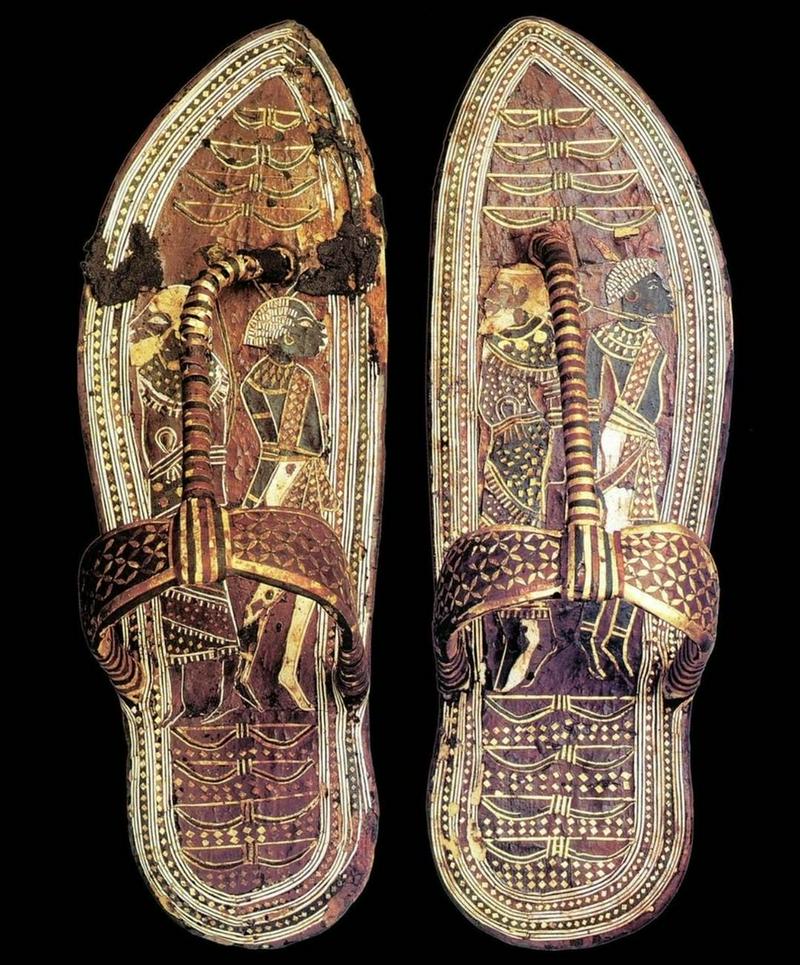
When we think about ancient Egypt we tend to imagine giant pyramids and mummies interred in sarcophagi, but there’s so much more to the time period than those basic facts. These sandals work by King Tut show that people in Ancient Egypt were more like modern day people than we ever imagined. Not only did they wear shoes similar to what we have today, but they were just as into fashion as we are. André Veldmeije, renowned ancient footwear expert said:
When footwear is mentioned in general books, if at all, it is usually noted that sandals were flimsy and most people were barefoot all the time. Moreover, they say there were only few types of sandals. This is a misconception, probably based on artistic depictions alone. The variety of footwear is much greater than imagery suggests and even includes shoes that are never depicted; we only know them from the archaeological record.
The wreckage of a Kittyhawk P-40, that was found in the Sahara Desert in 2012

The Curtiss P-40 Kittyhawk was a British version of the Tomahawk, an American fighter plane that made its debut in World War II. The P-40 had an Allison in-line piston engine that could hit up to 378 miles per hour. It could attain an altitude of 15,000 feet in six minutes and 42 seconds, but its range was only 240 miles, making it mostly a defensive plane.
This Kittyhawk piloted by 24-year-old Flt Sgt Dennis Copping went down in the North African desert in June 1942, 200 miles from the nearest town. It stayed there undisturbed until it was discovered by a Polish oil company worker in May 2012. No one knows what happened to Sgt. Copping.
The Cau Vang, outside the city of Da Nang in Vietnam is held up by two giant stone hands.

Vietnam is one of the most fascinating and unexplored countries in the Eastern hemisphere. With cities like Hanoi seated next to dense jungles tourists can take in a bevy of sites in a few days. One of the coolest pieces of architecture in the country is the Cau Vang Golden Bridge, a lengthy bridge held up by a pair of massive stone hands. Designed by TA Landscape Architecture, the bridge can be found on the top of the Ba Na Hills near Da Nang and visitors can get to it easily, they just have to take a cable car up to the top of the hill to walk past the giant hands.
An early toaster from 1920

Is there anything better than a hot piece of toast? One might say it’s the best thing since sliced bread. Following the advent of electricity all sorts of fun little inventions started pooping up in stores, including this early toaster. While it does what the toaster in your home does right now, it does it much differently. In stead of toasting both sides of the bread this early toaster only heats one side of bread at a time, so users have to watch their bread get warmed to their preferred crispiness before flipping the bread and toasting the other side.
Leon Panetta offered a $10,000 bottle of wine as a prize for Osama Bin Laden's capture

Following the horrible events of September 11, 2001 the Taliban’s ringleader, Osama Bin Laden, became public enemy number one in the western world. Everyone wanted to find Bin Laden and bring him to justice in order to bring honor to the country, but there was at least one restaurateur who put up a bounty on the terrorist’s head. California restaurateur Ted Balestreri jokingly said that he would uncork his 141-year-old bottle of Chateau Lafite Rothschild with US Defense Secretary if they played a part in the capture or death of Bin Laden. After Bin Laden was brought down in 2011 Balestreri said he would be honored to open up the bottle in celebration.
This amazing 16th Century ring unfolds into an astronomical sphere

This ring from the 16th century that unfolds into a geometrical shape is mind boggling when you think about it. The intricately designed ring has to be designed to fit around a finger while folding out into a series of smaller rings, it’s truly fascinating when you think about it. The ring maker who had to create this piece of jewelry must have spent days, if not weeks, putting this together so everything connects perfectly. Do you think if there’s a few prototypes out there that don’t connect in the same way? Or did the creative blacksmith have to create detailed blueprints before constructing the ring?
The world’s oldest astronomical clock is still in operation in Prague.

The Prague Astronomical Clock is one of the world's oldest fully functional astronomical clocks, meaning that aside from telling the time it also displays information about the Sun, Moon, Zodiac constellations, and even other planets in some cases. The astronomical clock in Prague is known as The Orloj and in order to provide the time and locations of astronomical bodies it had to be constructed with multiple layers. The main face of the clock features the time as well as glyphs that show ancient Czech time as well as a set of Roman numerals that tell 24 hour time.
The face is colored in different colors of blue and red that represent different parts of the day from sunrise to sunset and even when it’s simply night. At the center of the dial sits the Earth.
An ornate piece of the Fukang meteorite that was found in the mountains near Fukang, China

Discovered in China in 2000, the Fukang Meteorite is one of the most beautiful interstellar bodies that’s been found on Earth. An anonymous hitchhiker found the meteorite outside the town of Fukang in the northwestern part of China. The beautiful space rock is made of Pallasite, recognizable for its pieces of olivine crystals embedded in an iron-nickel matrix. When slices of this meteorite are lit from the back they take on the look of a stained glass window. Scientists aren’t sure about the origins of Pallasite, and it’s believed that the meteorite formed approximately 4.5 billion years ago.
This rare Keaton music typewriter features a circular keyboard with 33 keys for musical notation

First patented in 1936, the Keaton Music Typewriter originally featured 14 keys but by the 1950s it had been updated to feature 33 keys. This typewriter worked boy placing a sheet of paper beneath the typing mechanism before the notation maker started typing. While these may seem complicated, in reality these musical typewriters made writing sheet music somewhat easier but it’s likely that whomever was typing had to work very cautiously unless they wanted to start all over again with a new sheet of paper. The musical typewriter has three space keys which allow the user to move the typehead through various units for different purposes.
Ladder 3 was one of the first firetrucks to show up on September 11, 2001

First responders to the World Trade Center attacks on the morning of September 11, 2001 charged head first into the chaos and disarray of the morning and many of them didn’t survive. One piece of equipment stands as a monument to their courage; Ladder 3. This truck was driven by Captain Patrick Brown and firefighters, and as they lost their lives when the North Tower toppled the front of the truck suffered a similar fate. The front of the truck was ripped off as the building collapsed, leaving it to fester in the wreckage. After the clean up of the area the truck was placed in a hangar at JFK International Airport before it was moved to the Memorial Museum in 2011.
Legendary whiskey distiller Jack Daniel died from kicking his safe after forgetting the combination

What a way to go. On October 9, 1911 in Lynchburg, Tennessee a titan of American industry was taken down by his own safe. This safe didn’t fall on him and he didn’t try to detonate with dynamite that backfired, instead he was trying to take care of some paperwork that was left inside the safe. Without the combination Daniel started kicking it, which of course didn’t do anything but leave him with a nasty infection on his big toe. The infection turned gangrenous and spread throughout his body, and luckily he had time to turn over his business to his favorite nephew Lem Motlow before he passed away from complications due to his infection.
German artist Igor Loskutow carved this incredible wooden dragon bench with a chainsaw
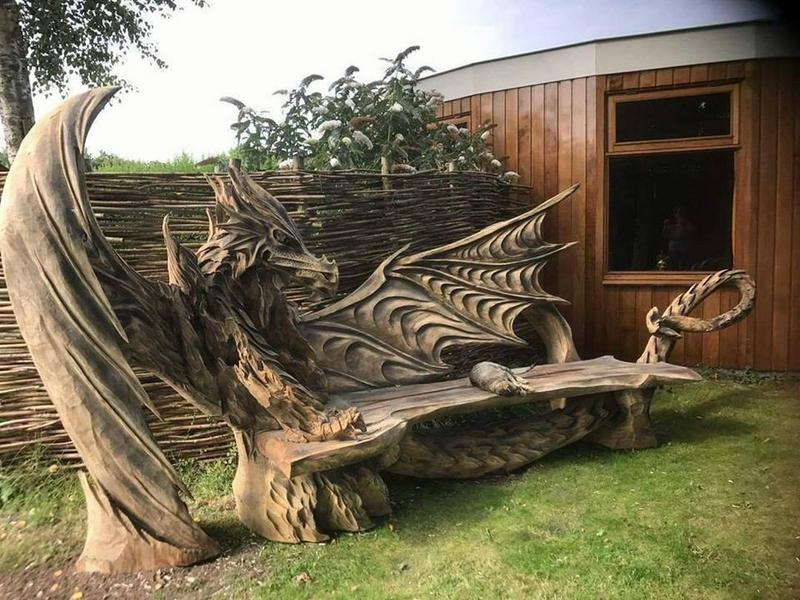
We don’t normally think of a chainsaw as a tool for precision cutting, but for Estonian artist Igor Loskutow it’s one of his most prized possessions. As a part of the Husqvarna chainsaw sculpture team he goes across Europe showing off his unique set of skills. This impressive dragon bench was carved with its head and tail curling around where you’re meant to sit shows a masterful amount of precision and grace. This bench was awarded the top honors at the 2015 Huskycup World Title, a prize that Loskutow obviously deserves. In 2017 he started constructing a similar bench, but used contrasting woods to get a fiery effect.
Surgeon's kit from the American Civil War

War zone medics are never in the perfect place to perform their operations. They go to work under extreme duress and usually only with a few pieces of equipment. This goes doubly for a medical professional during the Civil War. Medics at this time not only had to work with a very limited amount of material and medicine, but they were working during one of the most bloody conflicts that’s ever occurred. This photo shows a well stocked medical kit, but it’s likely that while in the field a medic had to work with whatever they had, hopefully there was enough brandy for whomever they were operating on, if not the procedure was sure to be painful.
This 500-year-old boxwood miniature from the 16th century was created in the Netherlands

This magnificent wooden box carving is so intricately done that it boggles the mind. Every detail is perfect, each piece looks like it could have taken someone’s entire life to accomplish. Researchers believe that box carvings like this were intended to be used as status symbols of the hyper wealthy of Europe 500 years ago. The boxes showed religious moments from the Bible, others simply showed what life was like for different classes Art historian Eve Kahn explained:
The works can be so rich that individual feathers are visible on angel wings, and dragon skins are textured with thick scales. Crumbling shacks are shown with shingles missing from their gabled roofs. Saints’ robes and soldiers’ uniforms are trimmed with nearly microscopic representations of buttons and embroidery, as well as jewelry and rosary beads.
A timeless Fuchsias necklace made by Georges Fouquet in 1905

This fascinating Art Deco necklace was put together in 1905 by Georges Fouquet, a French jewelry designer known for his intricate creations. After joining his father in the jewelry business in the 19th century he opened his own shop in the 1900s where he specialized in art nouveau necklaces like the one pictured here. His jewelry is considered to be more than a fashion statement, and much of his work can be seen at the Metropolitan Museum of Art in New York City as well as in the Petit Palais in Paris, France. A recreation of his shop can be seen in the Carnavalet Museum in Paris.
The colossal stone head of an Olmec warrior.

The colossal Olmec head sculptures are some of the most recognizable pieces of tribal art in the world. Found near San Lorenzo and La Venta, the Olmec heads provide a small insight into a group of people that researchers don’t know that much about. Not only do these statues represent the distinct features of their people, but they must have taken considerable manpower to create. Carved from hand out of a single basalt boulder which in some cases were transported 100 km or more to their final destination, it’s hard to fathom how they could be transported, let alone cut into shape.
Whimsical silver ice cream spoons from 1890

Who doesn’t love a beautiful spoon? While chowing down on ice cream it’s always fun to see something intricate and whimsical as you much on a delicious sugary treat. These spoons came about in the Victorian era when everything was designed to look just a little more intricate than it needed to be. The shell design on this spoon doesn’t need to be here, but it’s fun to look at and that’s the point. These spoons provide levity to a dessert that’s already fun, which is pretty much what the Victorians were all about. After all, who can say no to a fun little spoon?
A sewing machine from 1867, this invention was one of the most contested of the 19th century
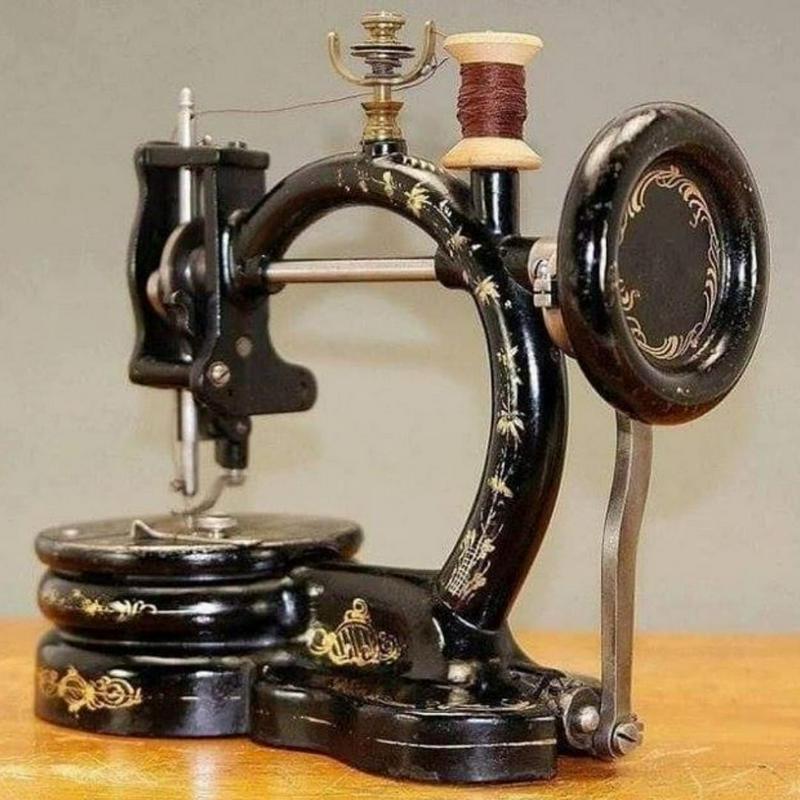
Between 1832 and 1834 Walter Hunt developed the sewing machine in his workshop on Amos street in New York City. The first version of the machine was built by hand, and they contained a curved needle and a shuttle that helped interlock a stitch with two threads. Over the course of the next 30 years the sewing machine would receive many updates and changes that helped bring fashion technology to another level. At the same time there were many copycat designers who were trying to gain the first patent on the sewing machine. Oddly enough, this little machine became one of the most litigated tools in the 19th century.
Carved wood skeleton rocking chair made in Russia in the 19th century

Skeleton rocking chairs are certainly macabre, but they’re also incredibly comfortable. This is because they’re hand crafted from beauty pieces of wood and made to last for years. These hand crafted pieces of furniture sell for thousands of dollars, and through some auction houses they can go for even more. Newer versions of this chair are modeled after a 19th century version that stands at about 54 inches tall. The chairs are ornately carved to look as if you’re seated in a skeleton, which is spooky but if you’re of the gothic persuasion they’re worth a purchase... as long as you don't mind explaining it to your friends.
This small ornate ax was made in Germany during the late 1500s.
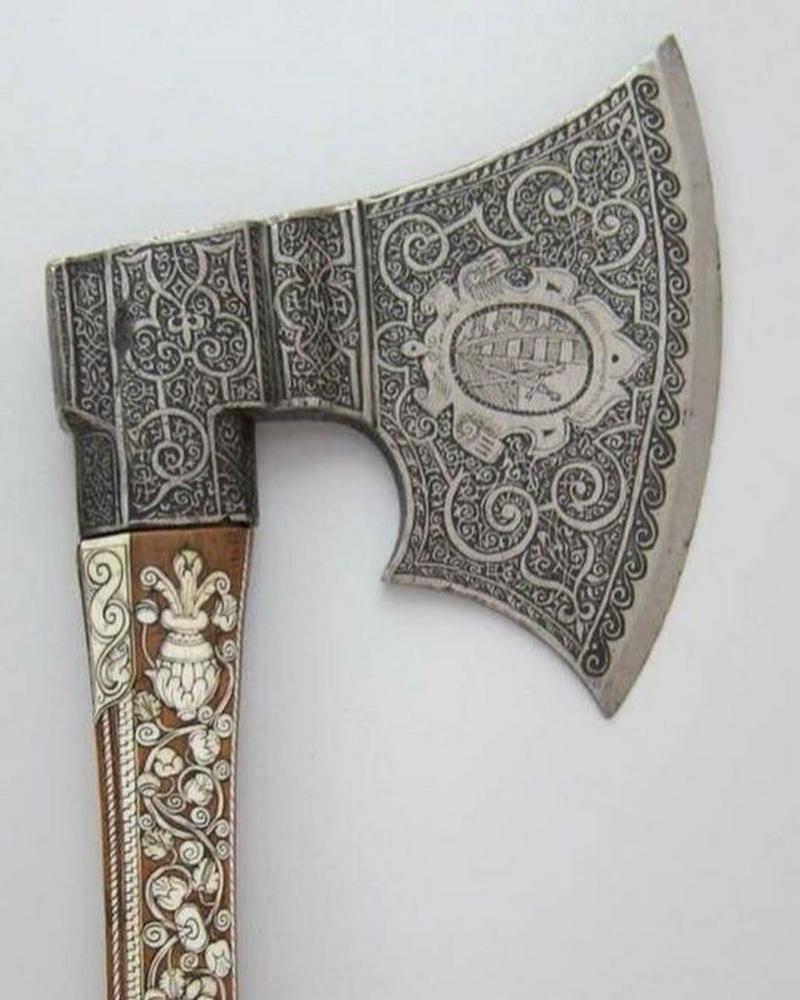
The craftsmanship of this axe is truly inspiring and it makes us long for the days when blacksmiths spent all their time working on tools as if they were pieces of art. This short handled axe has a variety of uses, be they for chopping or for throwing, although something that’s this ornate was likely for decoration more than anything. Can you imagine taking something this beautiful into battle and throwing it at your enemy? You’d never get it back. Although if you were going to use it, you’d probably use it in close combat. Still, there's got to be a better tool for that job.
Carbonized bread from Pompeii that still has the baker's stamp on it, 79 AD.
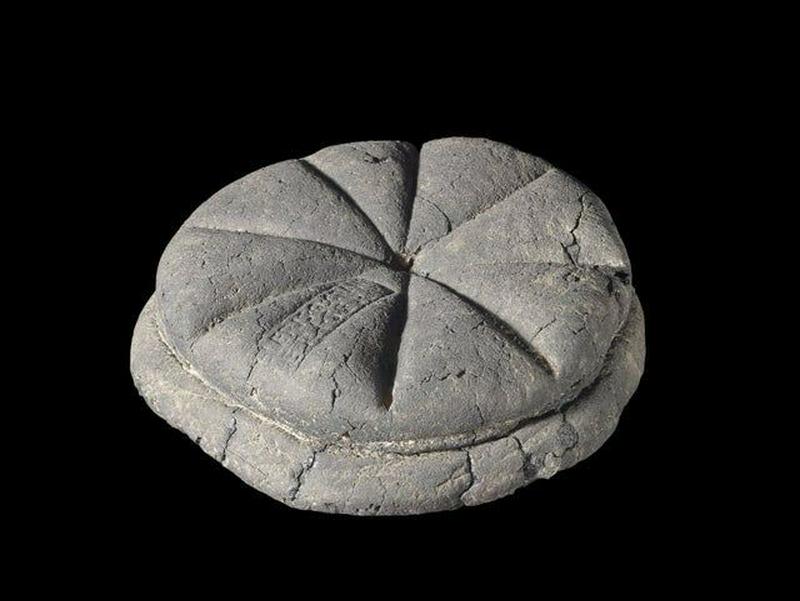
We know that the village of Pompeii was completely destroyed by the eruption of Mount Vesuvius in 79 A.D. Many of the homes, people, and artifacts were preserved under a thick blanket of ash. Things managed to be preserved that it’s hard to believe survived this kind of burst, including this full loaf of freshly baked bread. The loaf, round and dense is cut into eight different pieces and it’s even printed with the baker’s stamp that reads: “Celer, slave of Quintus Granius Verus.” It’s honestly miraculous that this even exists. Do you think it still tastes good?
Archaeologists uncovered the remains of a Thracian carriage and two horses that appear to have been buried upright
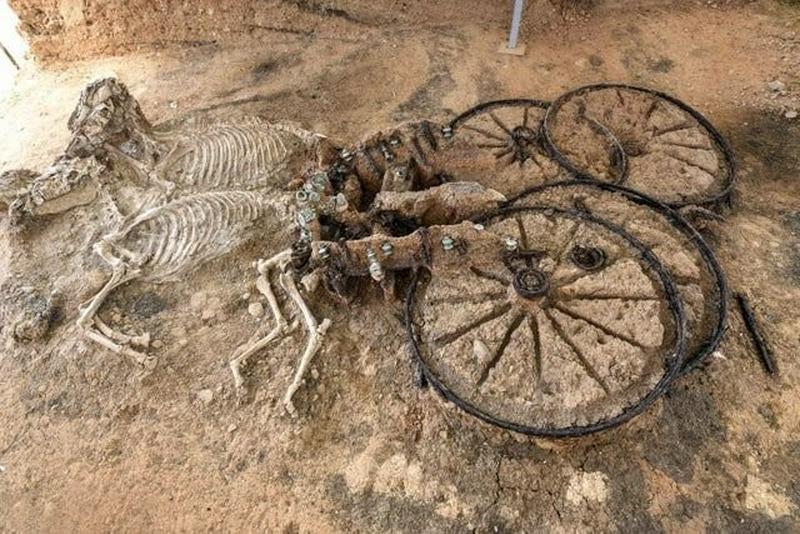
This is hard to see but it’s the way things went in ancient Bulgaria. In 2013 archaeologists discovered an entire carriage connected to the skeletons of two complete horses in the village of Svestari in north-east Bulgaria. The carriage has all four wheels, seat, and boot, and it’s believed that they were the property of a member of Thracian nobility. The horses were likely led through a narrow hole and put out of their misery before they were buried. This find is one of a kind and it’s unlikely that archaeologists are ever going to find anything that’s as well preserved.
A quirky bat lantern from 1930 is the erfect thing for Halloween
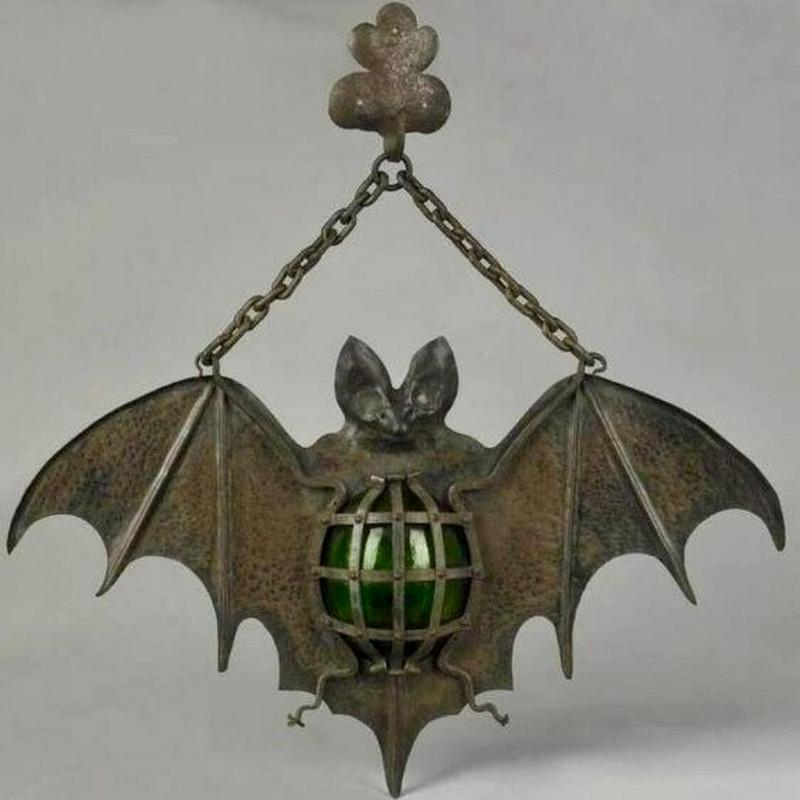
There’s something quirky and cute about this lamp from the 1930s. Made of cast iron and in the shape of a bat, it’s perfect for Halloween or just for anyone who likes to stay spooky the entire year around. In the modern era we tend to throw decorations away at the end of the season and then buy new ones whenever the next year comes around, but in the 1930s families either made their own decorations or purchased something like this that they could keep around forever. It’s clear that this bat is good to fly even today, they sure don’t make them like they used to.
A rare 16th century gold sundial and compass ring
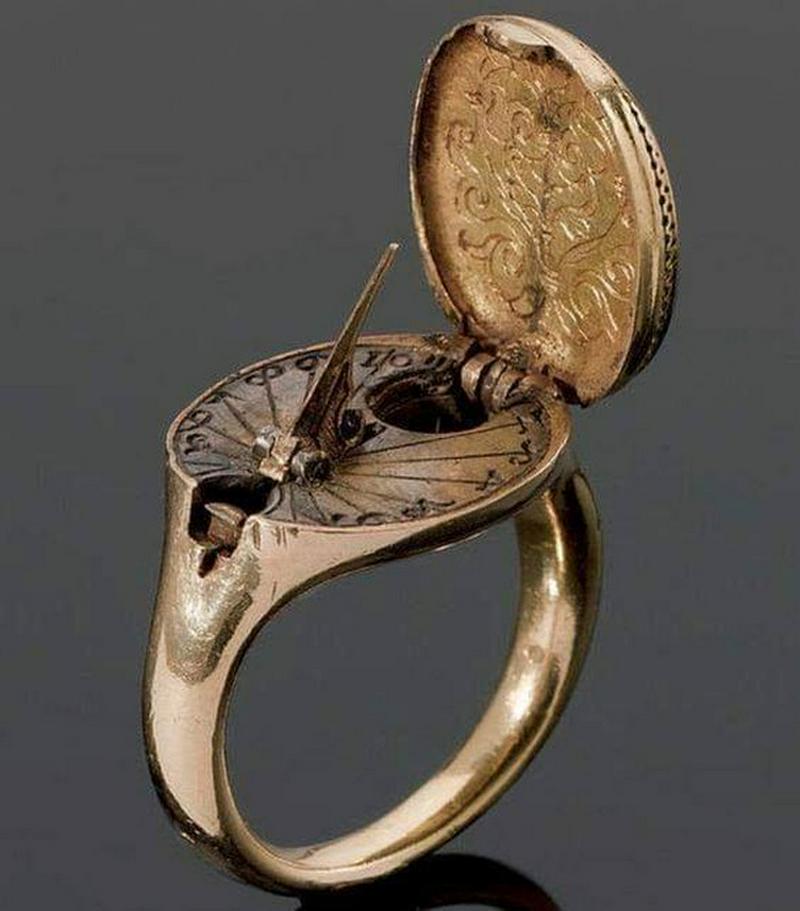
Need to know what time it is? If you were alive in the 16th century you couldn’t just check your calculator watch and you had to rely on the sun. If you had a little walking around money you could purchase a sundial ring like this. This miniature timepiece came about because people at the time were interested in the natural sciences and they were were fascinated into using natural means to accomplish tasks like figuring out the time and date. This ring features an engraved coat of arms as well as the opening that shows the sundial and compass.
Here's a tree growing through an abandoned piano, or is it?

This piano tree has long boggled the minds of viewers. Did someone drop off a piano in the middle of the woods and let a tree crack through it? Or was the piano simply sawed in half and placed around the tree to make it look all the more strange? The tree can be found in the woods near California State University, Monterey Bay which is actually a hint to its creation. A college student named Jeff supposedly placed the piano around the tree which must have taken a lot of work. Unfortunately the piano is no longer situated around the tree.
This diving suit from 1882 is cool but not practical
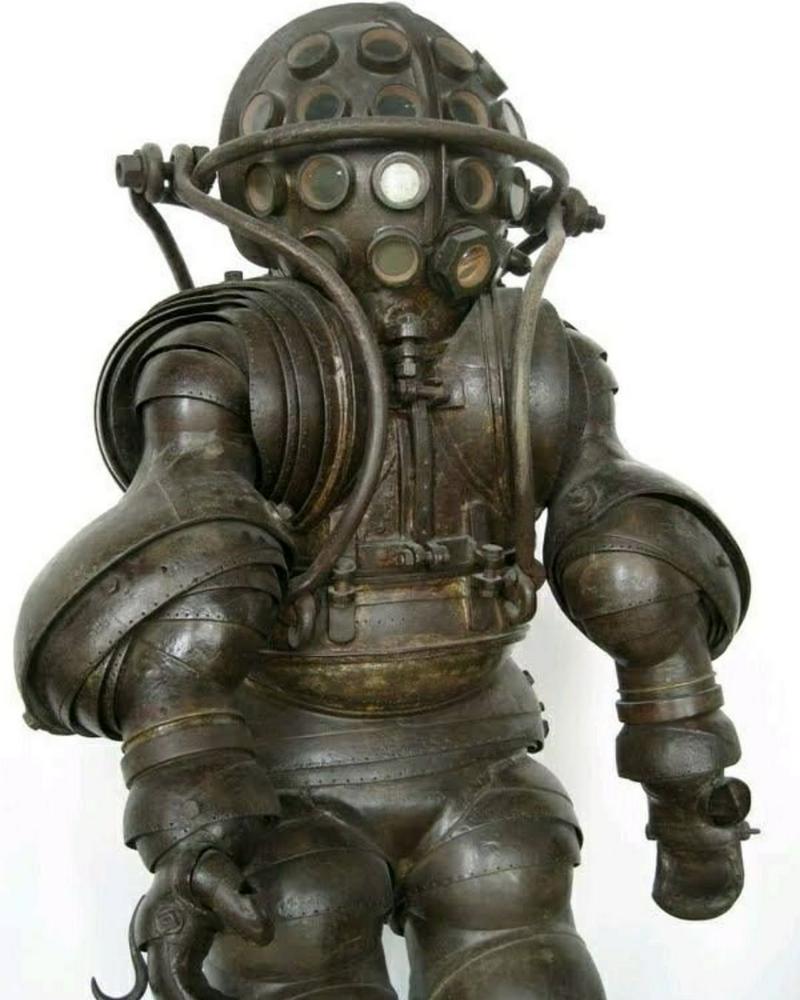
Diving has come a long way since the Victorian era when people finally started exploring the deep with sophisticated forms of technology that allowed researchers to go farther than they’d ever done it before. This design from 1882 was built by the Carmagnolle brothers of Marseilles, France. The suit provided more movement than anything that came before it with its 22 joints. On top of that, the helmet had 25 individual 2-inch glass viewing ports which were spaced out at the same distance of the human eye. Unfortunately the suit weighed just over 800 pounds and it was never able to be submerged without taking on a lot of water.
Ride in style in this antique hearse from Dresden, Germany

This hearse from Dresden is a thing of beauty. Its ornate design is something that you’ll find all over the place in the Victorian era, although this is more than a little extra. The carved angels and glass door weren’t exactly fixtures on the burial market, and that’s what makes this hearse all the more fascinating. There’s no construction information about this available online so the driver and owner remain a mystery, but it must have been the hearse that everyone wanted to use. Who wouldn’t want to send their family off in grace and style with this beautiful carriage?
A beautifully restored fireman's bicycle from 1905

Firefighters weren’t always tooling around in giant trucks, At the turn of the century some fireman were tasked with patrolling on bikes that came with their very own hose that could be connected to a water source. It’s also got a spot for a crowbar in order to get into buildings, and a flashlight so firefighters can get around in the dark. Online sources say that this bike was built for fighters in the workshops of Birmingham Small Arms in Great Britain. How cool would it be to have one of these for a summer time ride? Just hope you’re not mistaken for a fireman.
Women's lace-up boots with stars from Belgium, 1890s

Ooh la la would you get a look at these boots? In the late 19th century there was a major change in footwear thanks to the change in trade and manufacturing across the westernized world. Over the course of the century it was suddenly possible to make shoes that were both practical and that could be used as evening or performance wear. At the end of 1800s shoemakers began making separate shoes for the right and left feet, and as the technology advanced they were able to make shoes that could work with any outfit, rather than creating a one shoe fits all.
A creepy baby rattle from the 1930s

Imagine thinking that this was okay to give your kid. In the 1930s this was just the kind of thing that kids were given to keep them busy regardless of how much it freaked them out or posed a choking hazard. These rattles were made from lucite and made pretty good teething materials, even if they looked like they were going to crawl out from under your bed at night and wreak havoc. Toys of the era weren’t easy to come by, not only was the country in the middle of the Depression, but these bad boys were expensive. Cheaper options were made of either cloth or corn cob.
A groovy 8-track cassette radio from the 1970s

Before 1965 if you wanted to listen to music in your car you had to have enough cash to rival rock royalty so you could install a record player in your car - and even then that wasn’t a great listening experience what with all the sniping and scratching. In 1965 Ford Motor Company offered optional 8-track cartridge players in their sportier cars, and RCA answered this call by releasing all of their back catalogue on on cartridges.
Created but the Lear Jet Corporation (the company behind the private jet industry), 8 track cartridges made it possible to listen to your favorite tunes without having to purcahse an LP or wait for it to show up on the radio.
A line of pinball machines at an arcade in 1968

Early pinball machines were things of beauty. Early pinball machines required quite a bit of skill in order to achieve longterm play. Initially the flippers faced outwards instead of inwards, which made the game incredibly hard to play, which made young people all the more desperate to figure it out. That meant hours of fun for the kids and a lot of change for arcade owners. After World War II manufacturers like Gottlieb began manufacturing games with inward-facing flippers placed close together, the style of game that we’re used to now. Many collectors believe these to be some of the best classic pinball machines.
A rare 1947 Labatt Brewing Co. Streamliner

In the early 20th century most beer was transported via the railroad system, but Labatt changed that when they moved from rail shipping to moving their product on the road. Labatt didn’t want to move their beer on boring old trucks, they wanted to ride in style so they commissioned these gorgeous streamlined billboards to move their beer from town to town. The trucks were phased out in the 1950s, but they made a historic comeback in the 1970s when a truck was discovered in London, Ontario and fixed up. The Streamliner later showed up on a postage stamp in 1996.
A futuristic-looking 1938 Dymaxion, designed by American inventor Buckminster Fuller

The 1938 Dyamoxion looks like something from another planet, but for a brief period of time it was believed that this is what everyone was going to be driving in the 21st century. A concept car created by Buckminster Fuller in 1933, he chose the word “dymaxion” because the combination of dynamic, maximum, and tension sounded so cool. The original version of this car was built by hand, and it was meant to be displayed at the 1934 Chicago World’s Fair but it was hit by a car on the way to Chicago. Fuller finally managed to build three more versions of the car but they never took off. One of the three sits in a Museum in Reno, Nevada, and the rest are in the hands of private owners.
The library inside of the Waldsassen Abbey in Bavaria holds thousands of volumes bound in white pigskin

From the outside Waldsassen Abbey looks like a standard convent, a beautiful baroque church made from massive pieces of stone, but on the inside it’s a gorgeous and modern piece of work. Founded in 1133 the abbey was a male-only monastery until 1803. The library features intricately carved shelves filled with thousands of books that are bund in white pigskin and dark calfskin. Many of the columns are carved into the shape of grotesque men who have been bent into unusual shapes by their sins. Gazing up to the ceiling will earn the visitor a look at a painted ceiling that was finished in the 1700s.
This 1951 Studebaker Woodie concept car is one of a kind

Studebaker didn’t manufacture a Woodie for mass consumption in 1951, but they really wanted to. In the early ‘50s the company hired a designer to come up with this very cool car and they even buckled down and created one to bring to life with a 390-cubic-inch Ford Edsel V8, which means that this Woodie had some serious get up and go, They never went farther than the prototype, but the one they did build is a seriously cool, very rare, custom collectable that’s never been on the road more than for a test drive, making it look like it’s fresh off the factory line.
A Victorian butterfly brooch in it's original case

People have always enjoyed wearing jewelry, but in the Victorian era styles started to diversify with new fashions popping up over the last 50 years of the 19th century. In the Romantic Period from 1837 - 1860 stones were popular because of the serpent ring with birthstones that Prince Albert gave to Queen Victoria. During this era the colors were feminine and ornate, turquoise was the color of the day. More often than not the jewelry was simple and had a floral design, or like this broach a butterfly. At the same time the industrial revolution was in full swing which made these pieces of jewelry much more affordable.
The Wonderful Waterfuls Ring Toss Game by Tomy was hours of fun

Was there any game that was so delightfully frustrating as this ring toss game from Tomy? Out of all the games that came out of the ‘70s this is one that was equally fun and nightmarish to play. Everyone knows someone who claims that they were great at this game even though there’s no way that they could actually exude any skill at having small rings float through water. But what do we know? Maybe there’s someone out there who’s a savant at the mini water ring toss. Kids who play this game today might not understand why people were so into it, but after a few tries at the ring toss they’d be addicted.
A costume worn by Vivien Leigh in the 1939 film 'Gone with the Wind'

Gone With The Wind is one of the most memorable films of the 20th century. It’s got fire, wild southern accents, and some amazing costumes. Vivien Leigh’s costumes are truly astounding, designed by Walter Plunkett have some of the most ornate stitching and seaming as well as some of the most gorgeous embellishments including rope sashes, peacock feathers and the smallest of hats.
It’s clear that the costumes were designed by a genius, and unfortunately only a few of the original costumes survived following the wrap on the film. The gowns that do exist have been featured in exhibits throughout the years and they're truly worth seeing in person.
'Cow shoes' used by moonshiners in the Prohibition days to disguise their footprints, 1924

During the Prohibition Era moonshiners and FBI agents were in a constant game of cat and mouse. When moonshiners figured out a way around the FBI, the FBI brought down the hammer. And when that happened the moonshiners got crafty and changed their tactics. One of the ways in which moonshiners played with the heads of the authorities was to wear “cow shoes.”
These low tech shoes had false bottoms that changed footprints to cow prints, hiding any movement by moonshiners in muddy fields. It’s not clear how often these shoes were employed but they’re fairly genius. Try them the next time you’re on the run.
Designed and built in the late 1800's, this steamer trunk coverts into a stand-up dresser so the traveler doesn't have to unpack

When was the last time you were taking a long trip? How hard did you have to work to pack your bag? Wouldn’t you have preferred to bring everything you own so you didn’t have to pick and choose what to bring? Steamer trunks were the perfect traveling companion for someone going a long distance or taking a lengthy ship ride.
They were made for someone who was either traveling across the world and not going back to their old life, or for a traveler who was taking a long trip. There were drawers for intimates and tooth paste as well as larger sections for coats and thick pants (or whatever large clothing you might have). These were mostly popular in the Victorian era, but they’re cool in any era.
Ford executives select the colors for automobiles from 76 different scale models in 1953

When rolling out a line of cars you can’t just assign whatever color comes to your head, and this photo shows the amount of choices and work that the top executives at Ford went through in 1953 to get their new cars ready. The guys in Dearborn, Michigan used more than 60 scale models to see how their cars would look with different paint jobs.
Once the company heads decided on a selection of colors that they liked they prepared and painted full size models of the cars that were placed in a show room. Those cars were subject to another round of inspection and the final colors were chosen.
The 1936 Stout Scarab is one of the first minivans

Minivans have always looked a little weird, haven’t they? The Stout Scarab was an early version of the family vehicle designed by William Bushnell Stout in Detroit, Michigan. The Stout Scarab had a large body with a short, streamlined nose that tapered into the body at the rear.
It also featured Ponton styling, which is when the body of the car encloses the full width and height of the vehicle rather than being separated into multiple parts. The Scarab had a ton of space inside which made it perfect for families, unfortunately the concept caught on long after this large car went out of production.
A unique art deco desk fan from the 1930s

This Art Deco fan from the 1930s is one of those classic pieces of hardware that people dream of finding at a flea market. They’re such a rare piece of electrical architecture that finding one is like finding a needle in a haystack. Not every fan or small electrical device from the era looks as intricate as this, but how cool would it be to actually own this?
Theres something about this fan that just feels not only era appropriate but its inspiring in a way. It makes you long for a time when you could fire up the typewriter and get to work while cooling off on a hot summer’s day.
Take a ride in this beautiful Victorian-era elevator from 1890

While we tend to think of elevators as a modern invention, they concept of a booth that takes people up and down has been around since the 1854 New York exposition when Elisha Grave Otis gave a demonstration of an elevator to show that passenger travel was safe. By 1890 steam and hydraulic elevators were the norm as well as direct action hydraulics.
At the turn of the 20th century elevators with elaborate roping systems were installed in Chicago while the Plunger Elevator Company placed nearly one hundred hydraulic elevators in the John Wanamaker Stores in New York City and Philadelphia.
The Lite-Brite brought hours of fun while growing up

Released by Hasbro in 1967, the Lite-Brite was toy that gripped the imaginations of young people everywhere. Kids were able to make designs on a backlit light up board and while they could follow a template, users were also encouraged to go off he beaten path and make their own light up art.
Was there anything better than hanging out with friends on a rainy day and plugging in clear plastic pegs into the black sheets of paper and flipping on that backlight? Even when the batteries ran out and the lights died, Lite-Brites still managed to look cool.
Here's Christopher Robin’s original toys from 1925 on display

Anyone who grew up reading any of A. A. Milne’s stories of Christopher Robin’s adventures in the Hundred Acre Wood may think that they have a direct connection to the sweet little bear and his stuffed animal friends, but did you know that they’re real?
Well, sort of. Milne’s son, Christopher, really did have a collection of stuffed animals that included a bear, a tiger, an owl, and a kangaroo; all of which served as inspiration for Milne’s stories. The animals have been given to the New York Public Library, so anyone who wants can get in a little face time with their old friends.
A rare 1939 Lincoln Zephyr Coupe

The Lincoln Zephyr was a car ahead of its time. A luxury car with a low price, the mid-size car was the bridge between Ford’s deluxe automobiles and Lincoln’s K cars. These were cars for people who somehow managed to hold onto their money during the Depression but who hadn’t achieved insane amounts of wealth.
When America joined World War II all production of automobiles stopped in the country and that was that for the name Zephyr. After the war Lincoln started up their plants once more and while they continued to make this mid-price car they dropped the name Zephyr.
The face belonging to the Statue of Liberty from the inside

From the outside, the Statue of Liberty is a shining symbol of liberty draped in sea foam green. But on the inside that’s a whole other story. The different between the expertly molded exterior showing a glorious woman holding a torch for liberty and her interior is stark.
Inside she’s all hammered metal, and beams and posts made of wrought iron and rivets. In order to make sure the statue is structurally sound it’s crisscrossed with saddles and armature bars that look nothing like the lovely outside. In fact, it’s hard to believe that the interior and exterior belong to the same creature.
The one of a kind 1939 Duesenberg Coupe Simone Midnight Ghost

The “Midnight Ghost” is a fascinating car designed to mimic the Art Deco movement of the early 20th century. This beautiful car took three years to manufacture, and after it was finished in 1939 and was named the "Duesenberg Coupé Simone Midnight Ghost.”
The Ghost was the longest car produced by Dussenberg and it was also the last thing they ever made. While this car wasn’t cost efficient is sure is gorgeous. The car’s owner, perfume genius Gui De LaRouche, decided that he didn’t care for the initial gray on gray paint job, so he had it repainted a royal purple. Sadly, the car was lost during World War II.
Marketed as a toy for kids, U-238 Atomic Energy Labs came with three different types of live uranium ore and a Geiger counter

During the 1950s there wasn’t anything that couldn’t be solved with the power of the mighty atom. In the post war era American inventor—and magician—Alfred Carlton Gilbert created the Gilbert U-238 Atomic Energy Lab, an educational toy that was marketed to children - oh and it contained real life uranium.
As scary as that sounds there was nothing to be worried about. Or at least the’s what Gilbert claimed. For just $50 the Atomic Energy Lab came complete with a cloud chamber that allowed kids to watch alpha particles move at 12,000 miles per second. What a deal.
Petra, Jordan is the rock-hewn capital of the Nabataeans that was carved from sandstone

This beautiful architecture is one of the most stunning achievements in human construction, and to think that it was all done by hand is absolutely unconceivable. Built in the 3rd century BC by the Nabataeans, the sandstone city of Petra features palaces, temples, and tombs etched into the rocks.
The Nabataeans were able to construct the city of Petra because of their skills as master builders, but much of the beautiful town with gorgeous views of the surrounding area was destroyed by an earthquake in AD 555. Thankfully many of the most impressive pieces of architecture survive and can be visited today.
Shoes worn by Allied spies during World War II to steer the adversaries in the opposite direction

During World War II those spying on behalf of the allies had to go through considerable trouble in order to make sure that they weren’t discovered by the Nazis while securing Axis secrets. Aside from going out of their way to disguise their appearance as much as possible, which involved finding the perfect type of clothing that didn’t make them look too English they sometimes had to resort to trick shoes like this to throw Nazi forces off their tracks,
These shoes work similarly to those employed by moonshiners during prohibition (which were likely the inspiration), the soles faced the opposite direction that the wearer was walking, making anyone tracing their footsteps believe that the wearer was walking towards them rather than away.
The cool 1967 Stingray Jet Boat Hybrid is made for riding in style

What’s cooler than a ’67 Stingray? A ’67 Stingray that’s also a boat, obviously. You have to really love your car to want to turn it into a water ride like this, and you’ve got to know your way around automotive architecture to make everything look absolutely perfect.
It looks like whoever put this together lifted the top off their Stingray and placed it on top of a fiberglass boat bottom before sanding everything down and matching the color. Or maybe they just hammered at their car until it looked like a boat. Either way this must be a fun afternoon out on the water.
The arm and torch of the Statue of Liberty in New York City's Madison Square Park

Today when we look at the Statue of Liberty it looks as if it was brought over from France in its current state, however that’s definitely not the case. After the statue was designed and its pieces were constructed in the late 19th century it was brought over to America piece meal and the parts lived in various places in the country until designer Eugène Emmanuel Viollet-le-Duc and his student Frédéric Bartholdi could raise the money to actually finish the project. From 1876 to 1882 the statue’s arm lived in New York City's Madison Square Park which must have been startling to anyone going on a picnic.
The inspiring library at the Benedictine Monastery of Admont in Austria

There are libraries, and then there are libraries. The library in the Benedictine Monastery of Admont is the largest in the world, boasting awe inspiring architecture and contains everything from sculptures to manuscripts, and printed works.
Designed in 1764, the library was completed in 1776 and features seven ceiling frescos that were painted by the then 80-year-old Bartolomeo Altomonte over the course of two summers. The frescoes take the viewer through the phases of human understand from thought and speech all the way to the Divine Revelation. Below that painting sits the monasatery’s collection of different versions of the Bible as well as the works of the Church Fathers.
You can spend days in the Natural History Museum in London

Visitors to London, or even people who live in merry ol’ England, will never find themselves bored on a visit to the Natural History Museum in London. The museum features 80 million specimens within five main collections, and it’s a research center that focuses on taxonomy, identification and conservation.
The collection at the Natural History Museum is important because of its dinosaur skeletons and ornate architecture as well as the skeleton of a blue whale hanging from the ceiling of the vaulted central hall. Entry to the museum is free, which is super cool. What choice do you have but to get lost in its corridors?
The ornate Elephant Tower of the Carlsberg Brewery in Kopenhagen, 1901

The Carlsberg Brewery in Copenhagen, Denmark, started brewing its delicious elixir in 1901. The elephants that stand guard at the gates are fascinating not only because of their size but because of the fact that they’re adorned with pre-Nazi swastikas.
The brewery’s owner, Ny Carlsberg, chose the symbol because he felt that he should adopt a symbol that would bring his company good luck. At the time the swastika was a symbol of luck, but by 1930 that was long gone. The brewery went out of commission in 1940. Even though the brewery closed, the elephant statues remain and they’re just as impressive as ever.
The unbelivable wrought iron railing at the Château de Chantilly in France

As you head into the town of Chantilly, France, north of Paris, you’ll come across the Château de Chantilly, a lovely area that’s made up of the Petit Château which was built in 1550 and the château houses the Musée Condé. The estate is full of extremely detailed and gorgeous architecture that was rebuilt following its destruction in the French Revolution.
Today, the château serves many different functions and it’s played host to everything from the Molteni Campagnolo cycling team to a performance by David Gilmour of Pink Floyd. Thanks to a fund from the World Monuments Fund in 2008 the Grande Singerie has received a full makeover.
A futuristic 1930 Steam Line KJ Henderson motorcycle

The 1930 Henderson Model KJ Streamline is one of the coolest looking bikes that has ever been created, it’s a shame that it never really took off the way it should have. Why is it that so many Art Deco inspired vehicles never connected with audiences the way that the architecture did?
This bike featured enclosed bodywork which made it look like it was from another planet. However, at the time motorcycle culture was changing to look more stripped down and with open fenders. In another timeline this bike could have taken off and inspired more of these faux futuristic bikes.
The shoes of bog body Damendorf Man dated around 2nd to 4th century, found near Damendorf, Germany

In 1900 a body that’s referred to as Damendorf Man was discovered in the Seemor in Schleswig-Holstein, Germany. His bones were almost totally dissolved thanks to the bog water, and along with his decomposed body a collection of garments - like these shoes - were found along with him.
The bog man’s shoes were found wrapped in an accompanying pair of breeches that were with a leather belt. The shoes and accoutrements were strangely well preserved, and they’ve led to research of the bog where multiple human remains have been found. The shoes look strangely similar to something that we wear today.
The Statue of Liberty in its original copper form in Paris before it was transported to New York City, 1886

One of the greatest landmarks in America, the statue of liberty, has long been held in awe by people all over the world. The way we see it now, draped in sea green and staring out over Manhattan, isn’t the way it’s always been.
Made of copper, the statue was constructed from multiple parts over the course of a few years, and since it was put together on Ellis island it started oxidizing, thus changing its color to a gorgeous green. The statue was initially very shiny upon its completion in 1886, a look that’s never going to be seen again.
A modified 1946 Tucker Torpedo Prototype II, yes that's a third headlight

You wouldn’t be wrong if you thought that this was a car was a prop from a James Bond movie. The 1946 Tucker Torpedo prototype II was created by Preston Tucker and produced in Chicago in 1948. Tucker was only able to put out 51 cars before the company shut down on March 3, 1949.
The Tucker features a directional third headlight which activated whenever the car was turned to more than 10 degrees even though 17 states at the time had laws against vehicles with more than two headlights. It also had a rear engine and a roll bar integrated into the roof on top of a windshield made of shatter-proof glass.
This Schramm javelin prototype was a single-seat aluminum body helicopter designed by B.J Schramm in 1964

When Rotorway decided that everyone needed a personal helicopter they tapped B.J. Schramm to mock up an idea for a single-seat aluminum helicopter. The Schramm Scorpion took its first flight in 1966 with hopes of becoming America’s own personal kit helicopter.
The Scorpion production kits were actually on sale from the late ‘60s all the way until 1984. The mini-copters could fly out to a range from 160 miles and could cruise along at 65 miles per hour while carrying up to 425 pounds. Can you imagine how cool the world would be if we were all flying around in these mini helicopters?
A sugary timeline of Pepsi cans

If there’s one thing that’s true, designs and tastes change and that includes soda can designs. Pepsi has had some of the coolest looks of the 20th century, but it’s designs from the 1970s are absolutely iconic, specifically the can from 1978. The most fascinating thing about Pepsi’s design is how the design has changed so drastically since its first version.
Initially Pepsi came in strange little bottles that looked more like oil cans than anything, but that all changed in 1959 when the can took on something that’s more similar to a ribbon candy. Still, the cans from the '70s are undeniable.
A triple-decker bus roaming the streets of Berlin, Germany

Imagine how fantastic public transportation would be if people were moving around on public transportation that was three decks high, it would be great but it’s not real. Double decker busses came about in 1923, and while there are plenty of photos of triple decker busses out there, they’re not actually real.
The closest the world ever got to a triple decker bus was a double decker bus with a third layer bubble that went into service in 1932. The bus could carry up to 88 passengers and it operated between Rome and Tivoli. As cool as the bus in the above photo looks it’s just not real.
Spirographs brought hours of fun but they were created for a very different reason

Everyone has amazing memories of playing with a Spriograph when they were a kid. Some people were shut outside because of how messy they are, but some parents who must have had a room that needed its walls to be painted allowed kids to Spirograph the day away indoors.
Even though we think of the Spirograph as a uniquely ‘60s toy it was actually invented in 1827 by architect and engineer Peter Hubert Desvignes. The initial invention was used to create create elaborate spiral drawings in order to prevent bank note forgeries. Things certainly changed in the 150 years since the toy’s creation.

